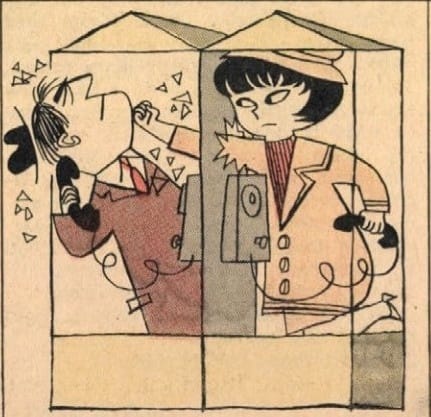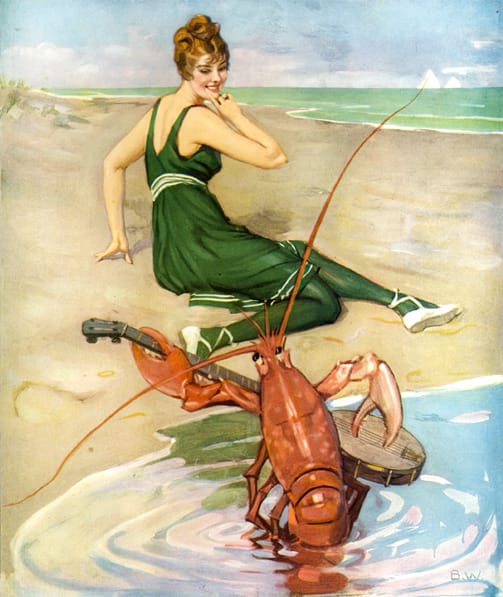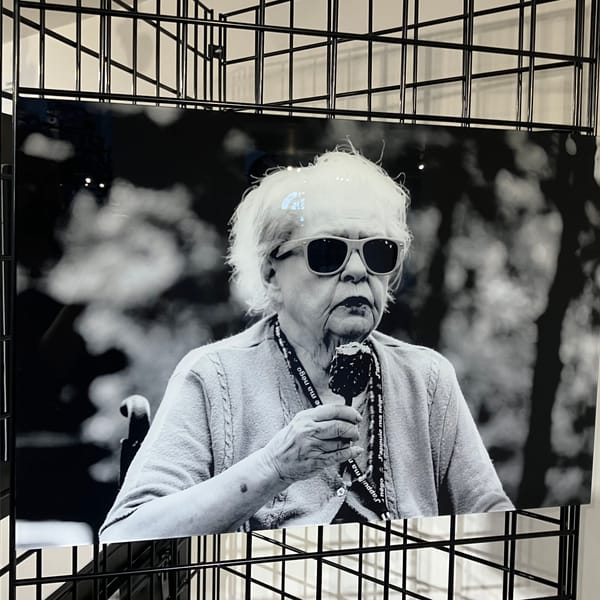Industrial Cheeese and Defanged Cocaine
Enter: Itaewon
3 May, 2023 | Seoul, South Korea
I moved on from my hotel to a new place. This was an attempt to actually use AirBnB for what I believe is its best purpose - embedding yourself in a culture a little and meeting one or more new local people.
I’ve had success at this a number of times. Besides my recent stay with Robert in Sydney, a trip to Munich more than a decade ago resulted in watching the German version of Who Wants to Be a Millionaire with a lovely couple, which really is a perfect show for someone who barely speaks the language - the host speaks slowly and repeats themselves ad nauseam. The same reasons why I couldn’t stand the American version are excellent for another language.
Anyway, I woke up in the hotel near the palaces in the center of Seoul and acquired breakfast at a delicious but moderately haughty bakery.
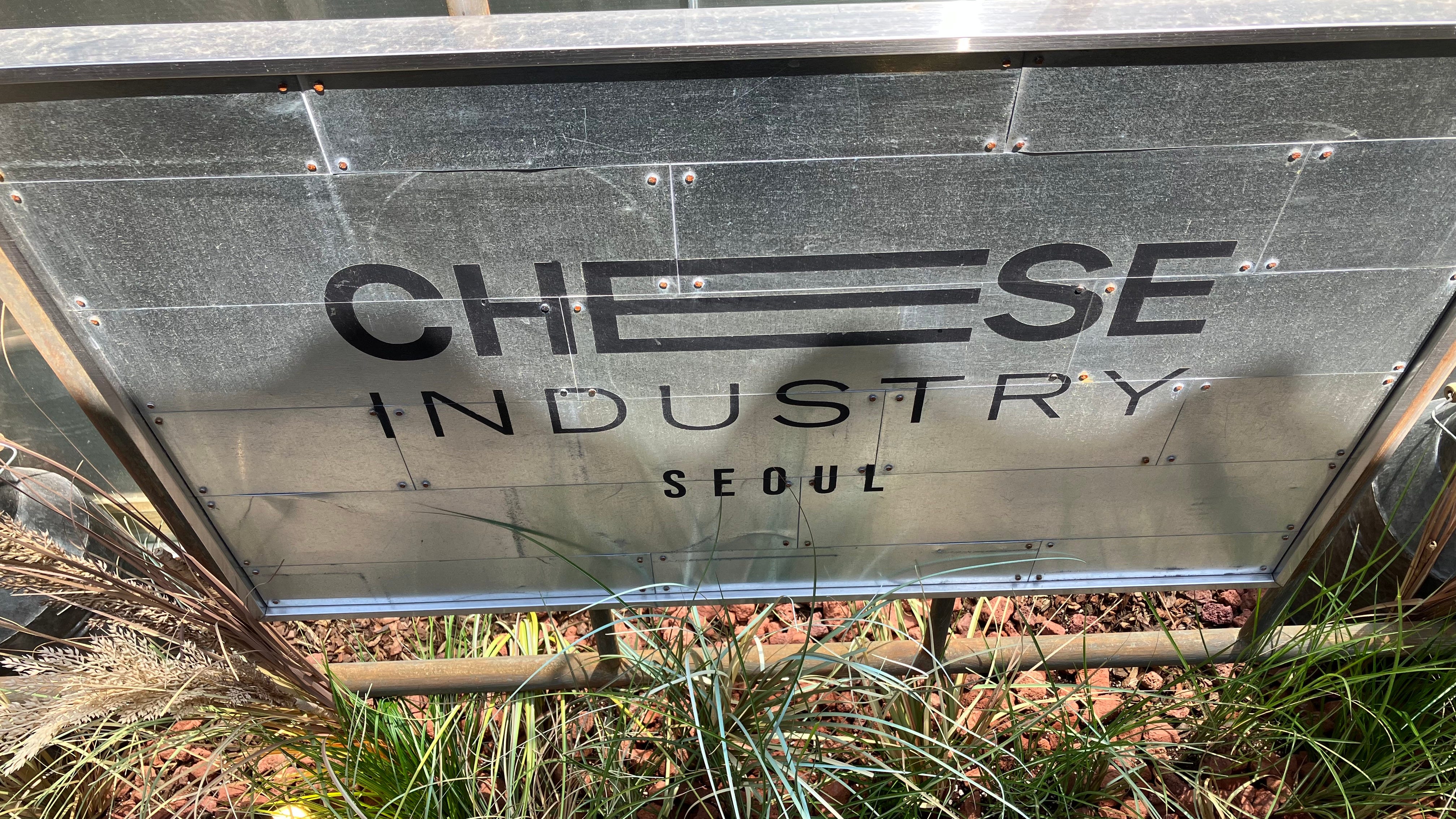
Overall a weird vibe with the mechanized ungulate art installation in the center, but the food was good.
I made my way to the new place, dropped off my things, and headed out into the new and fairly (in)famous neighborhood of Itaewon.
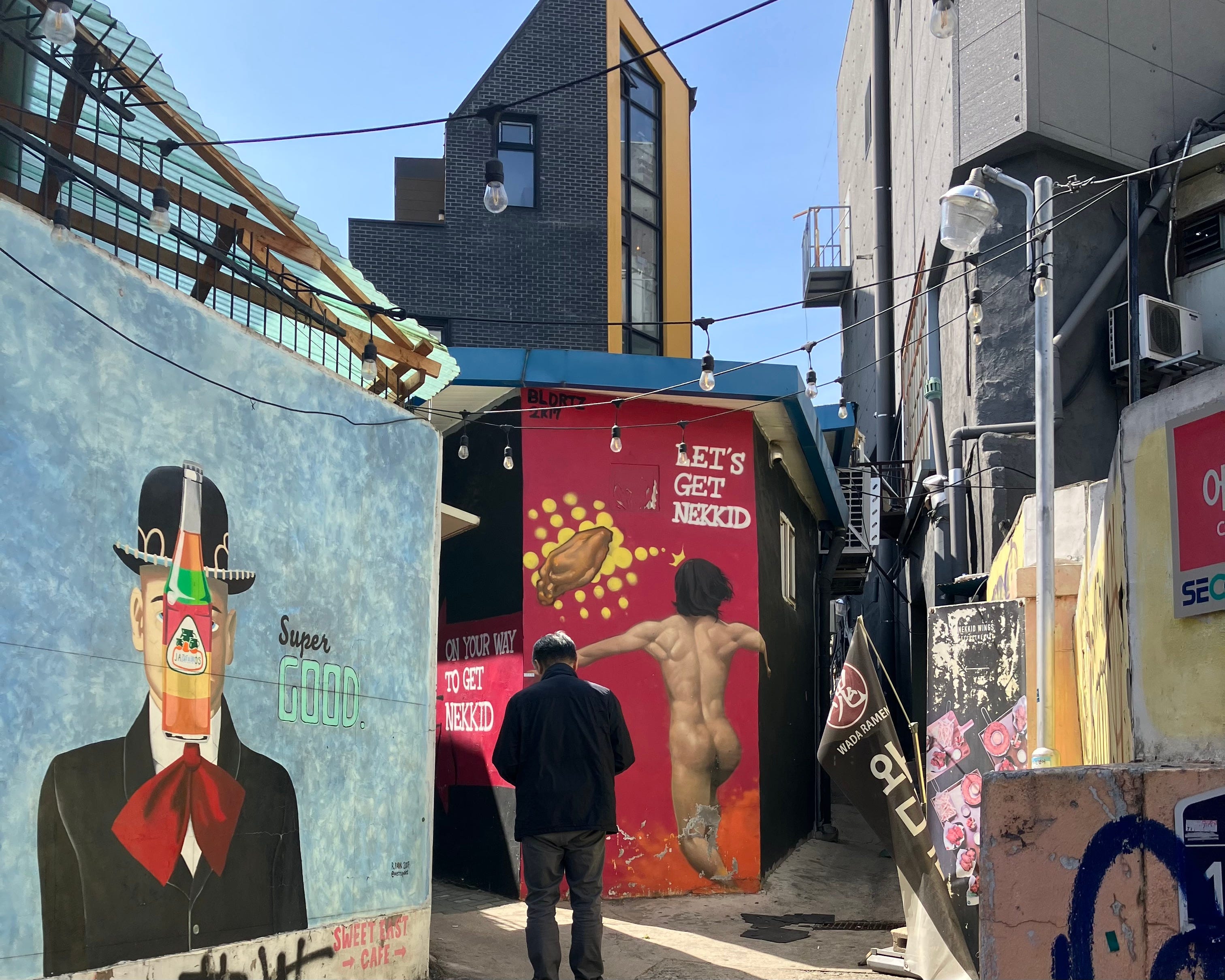
While the area has a history prior to the Korean War, today the neighborhood is heavily influenced by the sizable American military base within a 10 minute metro ride, home to some 17,000 service members. The knock-on effects of the Yongsan Garrison transformed the area into first (1) a red-light district with a brutal sex trade built for American soldiers (recently profiled in the New York Times), then (2)into the main LGBTQ district in Korea - as it was a place to go where people were either open or didn’t ask questions - and finally, (3) as with all LGBTQ areas in seemingly all major cities, an increasingly upscale and gentrified place, less and less affordable to members of the former community.

Besides the LGBTQ area, there are slivers of the neighborhood that exist as enclaves for many cultures and foreigners; there is an “Islamic Street” (sometimes known as “Halal Hill”) with two mosques, a “African Street” with a sizable Nigerian population, and a single synagogue serves the very tiny Jewish population of Seoul on another nearby hill.
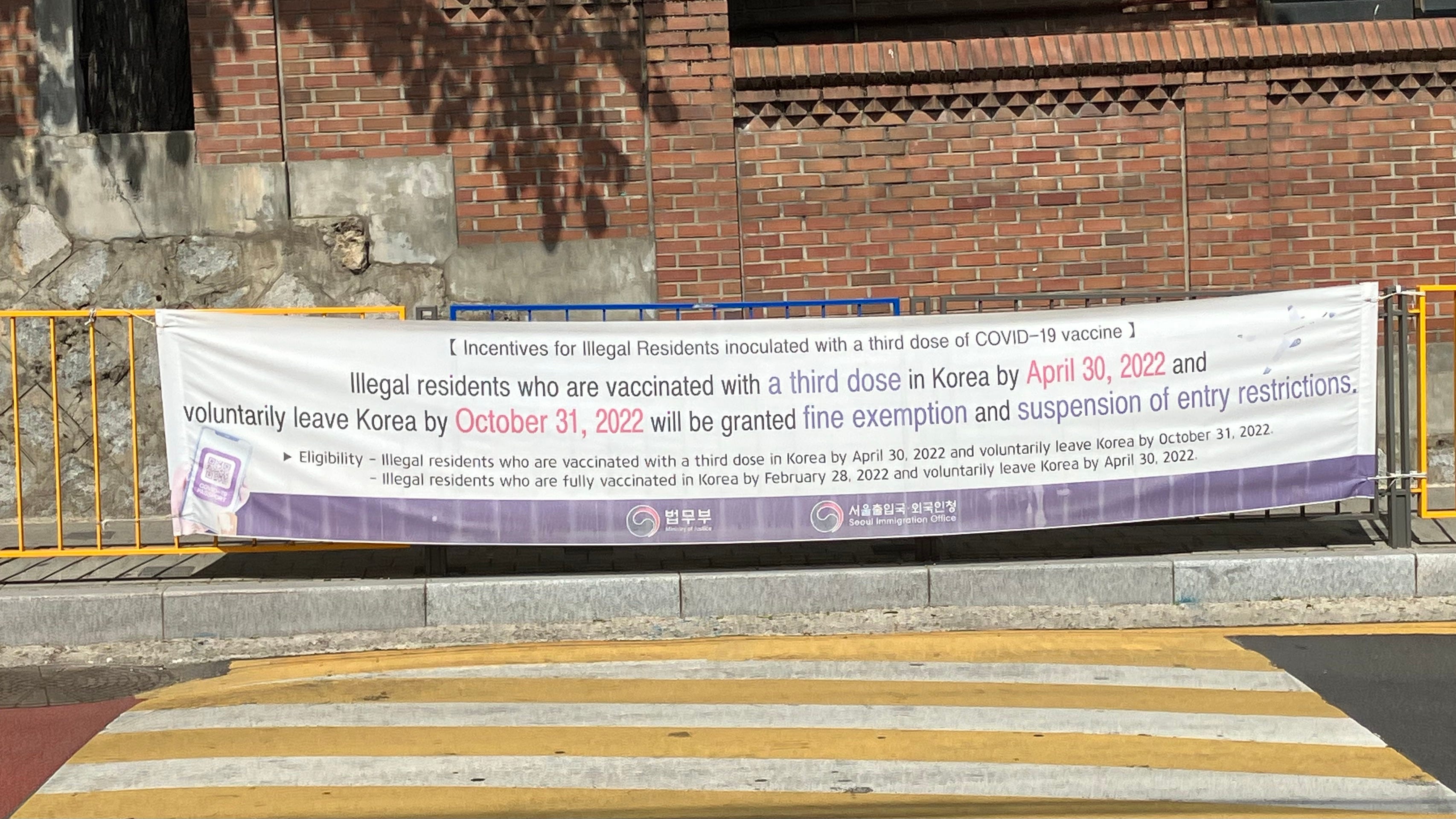
The only other thing I had on the docket for that day was visiting the Namsam Tower on Nam mountain, in the heart of central Seoul. At this point it is basically obligatory, having ascended the equivalents in Santiago, Auckland, Sydney, Osaka, with a failed attempt to do so in Tokyo (the building observation deck was closed).
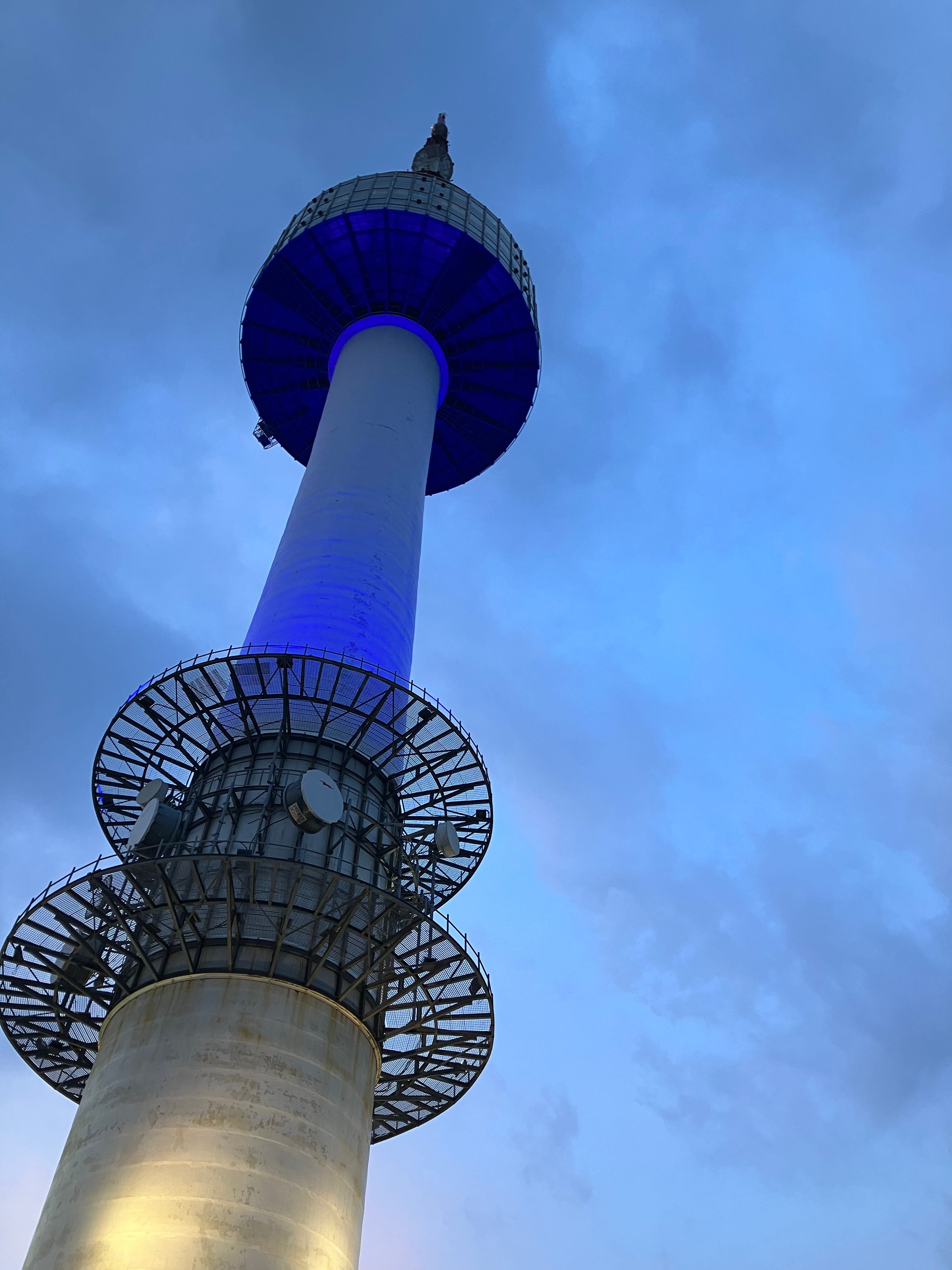
The run up to this place involved a bus transfer, a fairly substantial wait for your ticket number to come up, and some light-oriented indoor art before the ascent. Some people were really into it:
The elevator up was composed entirely of screens that played a preview of the tower you were already inside of, similar to the Sydney tower but (1) it wasn’t wasting your time and (2) it didn’t try to do some garbage headache-inducing 3D gimmick.
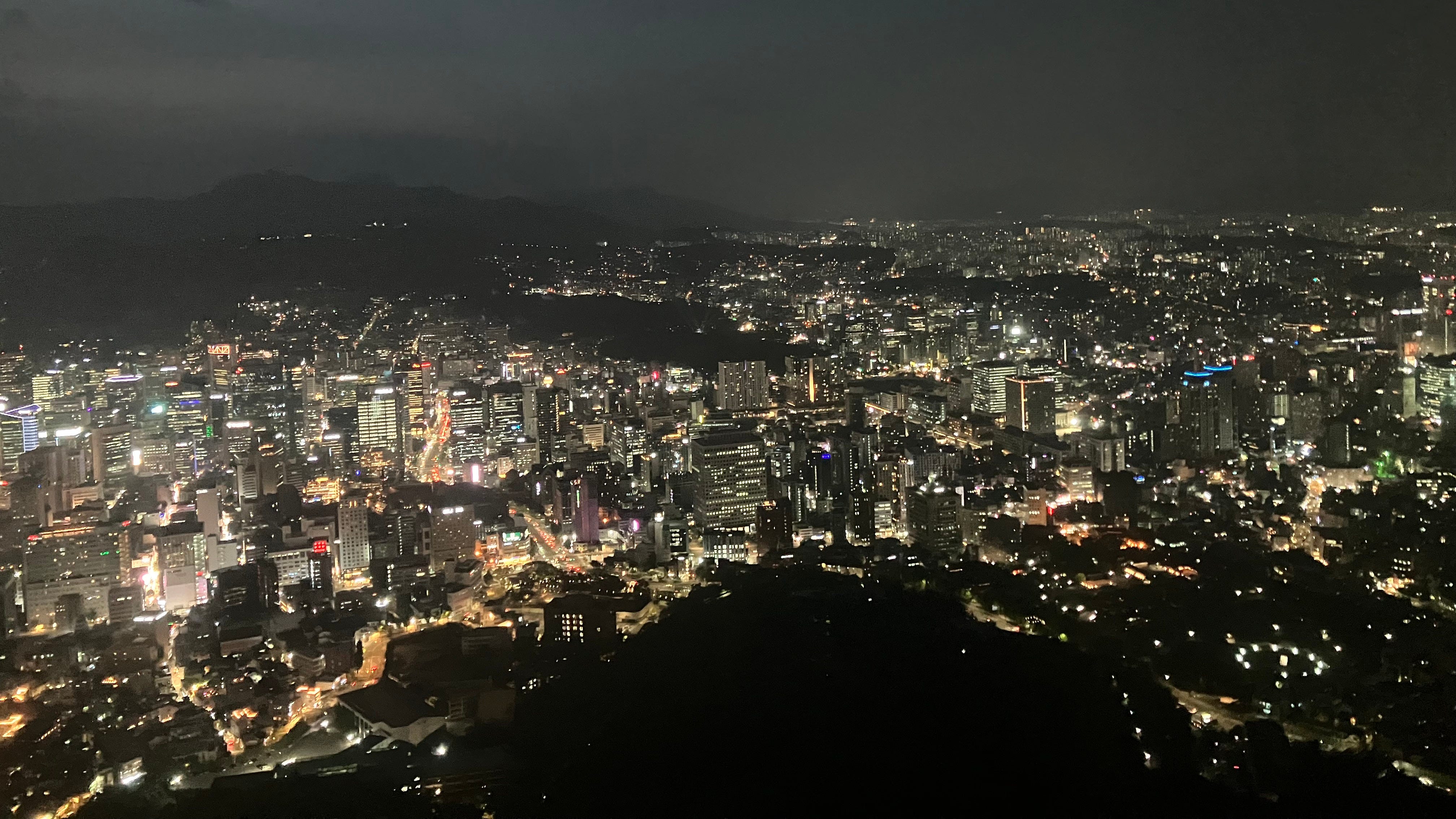
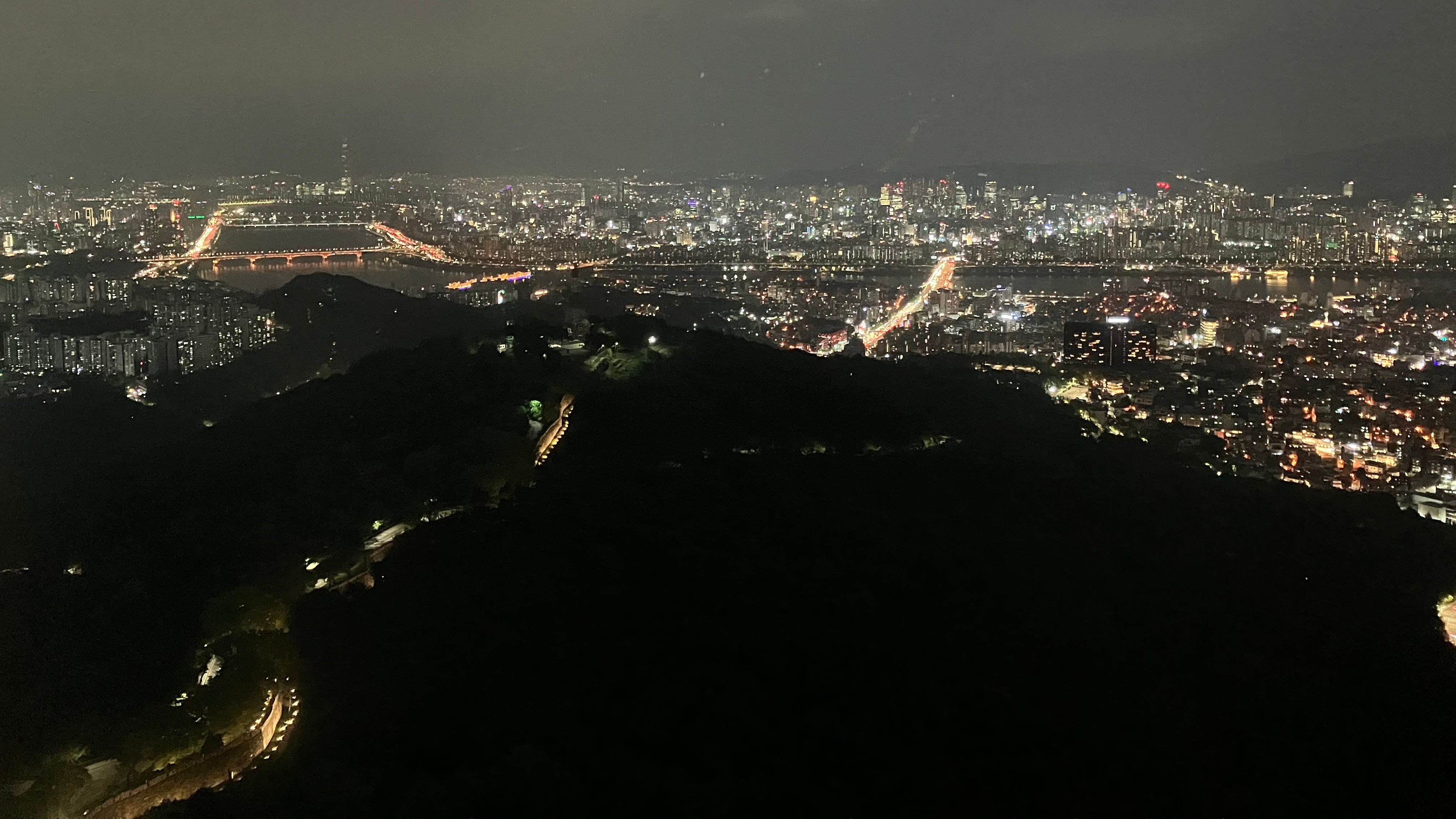
As it was a Wednesday, most of the queer bars I was interested in visiting were closed. After a short walk around a block, after ignoring the entreaties of feminine figures still plying their trade in this area, I arrived at what appeared to be the one open bar I could find that seemed welcoming: Always Homme.
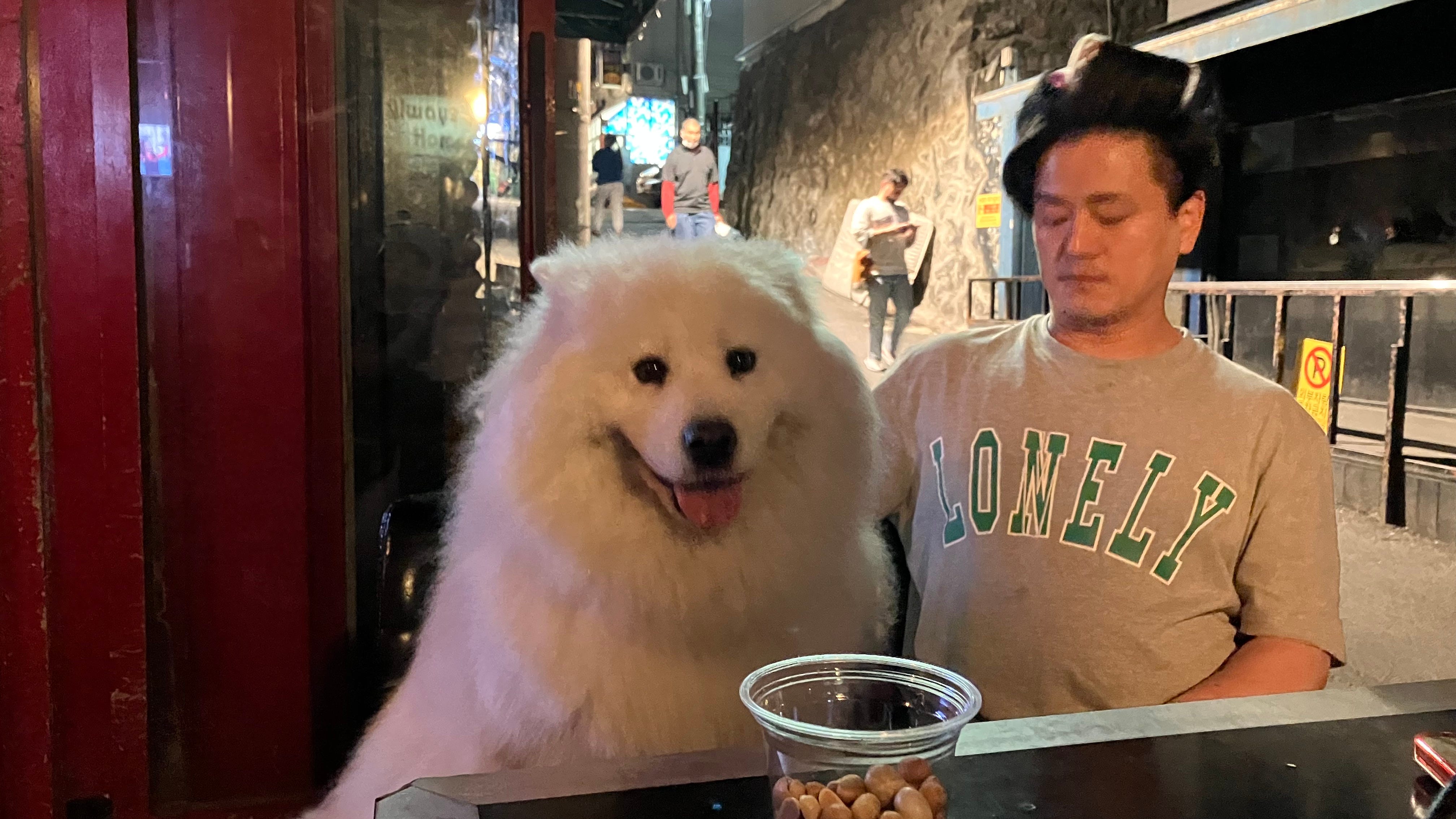
If you were to search for this place, you would find basically a nonstop supply of 1-star reviews and they are all basically accurate. Between aggressive touting and being just wildly overcharged, I can’t really recommend the place. That said, my two experiences there were basically fine and the staff were quite friendly, though I ended up paying for the drinks of a local minor celebrity director:

Anyway, what I can recommend is a beverage they introduced me to that I would try again in the following days - Agwa de Bolivia:
Agwa de Bolivia…is a herbal liqueur made with Bolivian coca leaves and 37 other natural herbs and botanicals including green tea, ginseng, and guarana, distilled and produced in Amsterdam by BABCO Europe Limited. The coca leaf content of the drink, like that in Coca-Cola, has the cocaine alkaloids removed during production, and does not contain the drug.
Despite the origin of its ingredients, I suspect it might be most popular in Korea. The reference image on Wikipedia cites this specific neighborhood.

